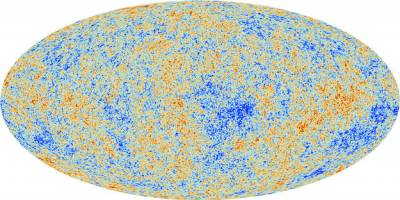CMB
The Cosmic Microwave Background (CMB) radiation is composed of photons emitted at the time of the recombination when the universe was about 300,000 years old, just after the Big Bang (redshift value about 1100). This radiation is almost isotropic and very well described by a black body power spectrum. However the CMB presents also very small anisotropies which can be described by the angular power spectrum. Given a cosmological model, the angular power spectrum can be computed and compared to observational data in order to constrain the set of cosmological parameters.
Our group is involved in the ESA Planck collaboration and has contributed to 2013 results and to the 2015 release, including a new paper, coordinated in Heidelberg, on dark energy and modified gravity, as well as cosmological parameter estimation, joint analysis Planck/BICEP2+Keck Array.
The all-sky image realized by the Planck satellite is the most precise picture of the early Universe and the results confirm that the Universe is in agreement with Lambda-CDM model.
The CMB is a very powerful observable which can be used to rule out or to validate the cosmological models and test fundamental physics. The ITP Cosmology group employed it for instance to test varying fundamental constants, early dark energy, coupled dark energy, speed of gravitational waves and lensing B modes in Hordenski models etc.
